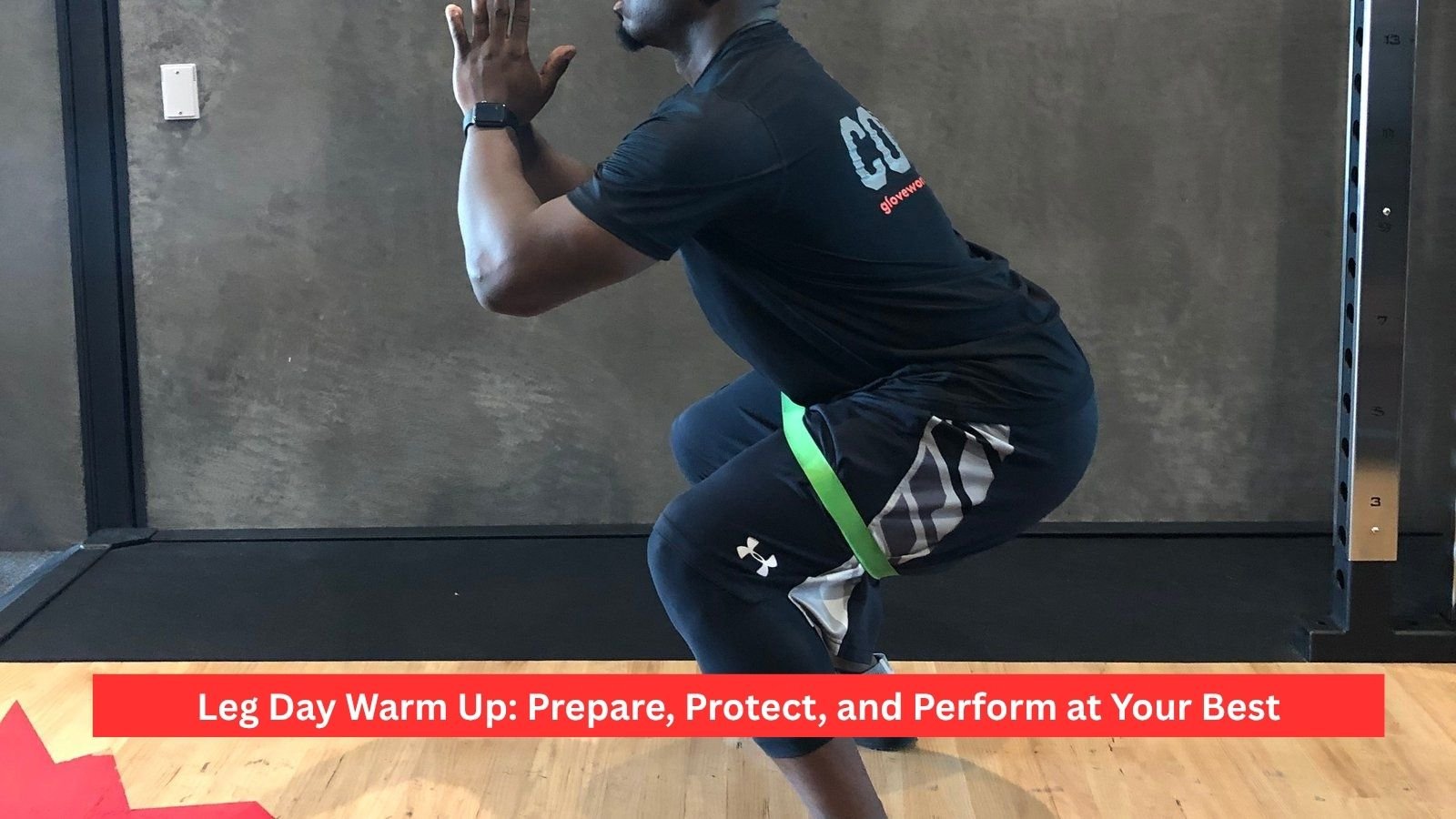The right leg day warm up enhances mobility, engages all the important muscles, prevents injuries, and strengthens performance. This is to be done between 10 and 15 minutes and involves light cardio, dynamic stretching, mobility exercises, and activation exercises. Warm up with sets of your major lifts. Following the training, incorporate regular stretches and appropriate recovery measures to alleviate the pain and aid development.
- Why Warming Up Matters on Leg Day
- Step 1: Start with Light Cardio
- Step 2: Dynamic Stretching
- Step 3: Mobility Drills for Squat Depth
- Step 4: Muscle Activation Exercises
- Step 5: Warm-Up Sets with Lighter Weights
- Common Mistakes to Avoid in a Leg Day Warm-Up
- After Leg Day: Cooling Down and Recovery
- Building a Strong Leg Day Routine
- Final Thoughts
- Frequently Asked Questions
Why Warming Up Matters on Leg Day
Leg day is known to be among the most difficult training days. Squats, deadlifts, lunges, and presses require hard work. Your muscles and joints are put to unnecessary strain without preparation. An organized warm-up is what prepares your body to press heavy weights and has a good recovery process.
Prevention of injuries.. Warming up improves blood flow, lubricates joints, and warms tendons.
Improves performance – Muscles contract at an increased speed, and your nervous system becomes better.
Increases hormonal reaction– Leg training is associated with increased release of testosterone, but only when the body is well prepared.
Stimulates expansion and strength– A traditionalized physique can manage an increased quantity, be it the 4 exercises or the complete routine of 7.
A powerful lifter runs the risk of bad form, poor depth in squats, and muscle fatigue setting in too soon, without a good warm-up.
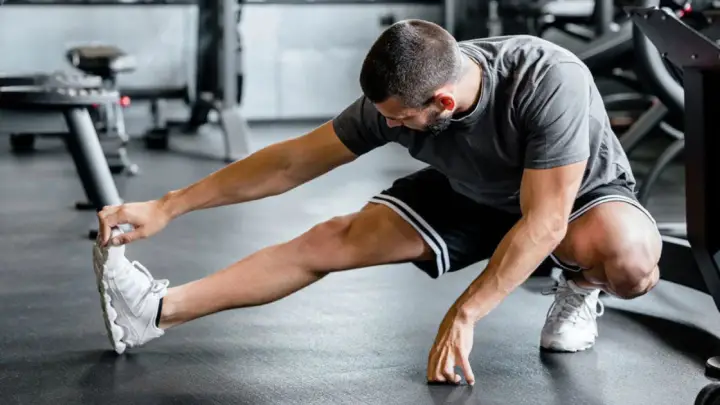
Step 1: Start with Light Cardio
Warm-up of every leg day must start with light motion so as to increase the heart rate. This does not imply running a marathon; excessive cardiovascular activity before lifting exercise can deplete strength. Rather, concentrate on brief sessions of exercise.
Jogging or brisk walking (5 minutes) – Builds circulation, but that does not strain your energy.
Jump rope (2-3 minutes) – This exercise exercises calves, increases stability of the ankle, and enhances coordination.
Riding a bike (5 minutes) – Holds the blood in quads and hamstrings and has low impact.
Light cardio also conditions your body to do more intense workouts in the future, like squats or Romanian deadlifts (RDLs).
Step 2: Dynamic Stretching
Dynamic stretching is recommended before lifting, whereas static stretching is more effective during the recovery of a workout. Imagine dynamic moves to be stretching in motion, which warm up joints and condition muscles.
Leg swings- Front-back and side-side swing– Front to back swings enhance hip mobility.
Torso twist, Walking lunges– Opens hip flexors, glutes, and activates the core.
High knees or butt kicks -Enhance circulation and assist you in locating rhythm prior to intense sets.
Best lengthening move in the world – A lunge, with torso rotation and hamstring reach, which is generally fancied to work many muscle groups simultaneously.
These stretches also imitate patterns of movements that you will undertake further, e.g., lunging, squatting, and hinging.
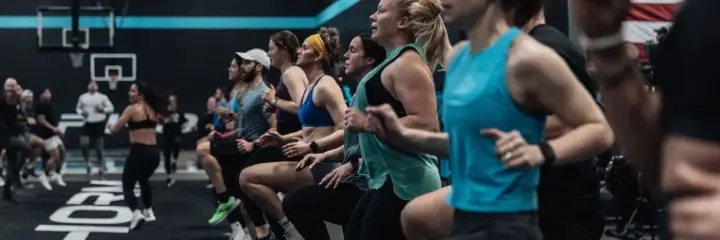
Step 3: Mobility Drills for Squat Depth
One of the most frequent problems with leg day is getting into appropriate squat depth without rolling your back or stretching your knees. Mobility exercises work on stiffness and reduce the risk of heavy lifting.
Hip circles– Loosens the hip joints, which are useful in squats and deadlifts.
Ankle rocks– This helps to strengthen ankle flexibility, which in turn increases the depth of squats.
Cossack squats – Stretches inner thighs as it prepares lateral stability.
90/90 hip rotations – This is a great exercise that can help tight hips open and enhance rotational control.
In case the mobility is neglected, such exercises as goblet or back squats can be restricted in their performance.
Step 4: Muscle Activation Exercises
Activation of the muscle makes sure that the right muscles are activated at the right time. As an illustration, in case your buttocks are not involved, your lower back might take up the slack in deadlifts and be strained.
Glute bridges – Make glutes strong, powering them to squat and lunge.
Banded side steps – Load the hip abductors by stabilizing your knees.
Bodyweight squats– This is a copy of the squat movement, and it stimulates the nervous system.
Good mornings (light weight) – Warm-ups hamstrings, glutes, and lower back, in anticipation of RDLs.
This is a particularly significant step when you are performing fewer exercises, such as a “big 5” regimen (squats, deadlifts, lunges, hip thrusts, calf raises), as each exercise requires the activation of the maximum amount of muscle.
Step 5: Warm-Up Sets with Lighter Weights
Train the heavy squats, deadlifts, or leg presses progressively. This will guard against the shock of your joints and enable you to practice form.
Squats with no weight bar– This time concentrate on the depth, balance, and the breaths.
Light Romanian delivers (RDLs) – Hamstring and glute preparation.
Goblet squats with dumbbell– Teach upright position and hip thrust.
Progressive loading– Add weight gradually until you reach the working sets.
It is also one way of avoiding excessive fatigue prior to your major lifts. Warm-up sets are not supposed to be in a hurry.
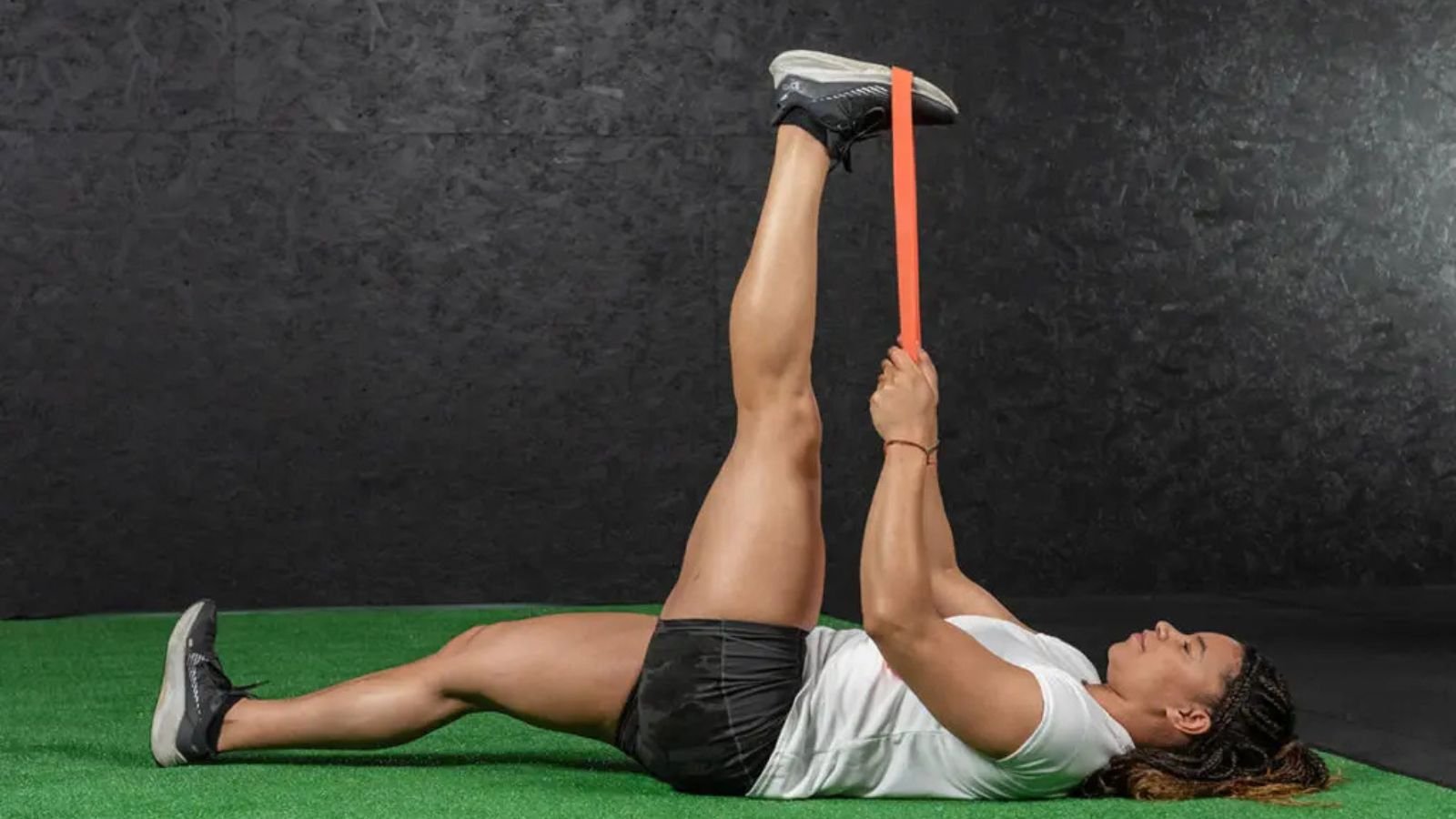
Common Mistakes to Avoid in a Leg Day Warm-Up
Poor warm-up may be equally detrimental as none at all. To be most effective, it is best to avoid the following traps:
Pre-lift stadium stretching– May decrease power production and slowness of activation.
Too much cardio– Burns calories you will use when squatting, pressing, and deadlifting.
Not doing the activation work– Causes the weak glutes, unstable knees and poor form.
Bursting into heavy weight at once– Stunning to the body and increases exposure to injury.
Warming up is like insurance; 10 to 15 minutes can insure hours, weeks, and even years of progress.
After Leg Day: Cooling Down and Recovery
As much as your leg day warm up is important, what you do after training is also of great importance. An adequate cooldown exercises the muscles and makes them relax, decreases soreness and speeds up recovery.
Static stretching (5-10 minutes)-Target hamstrings, quads, glutes, calves and hip flexors.
Calf Stretches– Prevent tightness with jumps, squats and calf raises.
Foam rolling– loosens muscle knots and relaxes an achy muscle.
Hydra and nutrition – Rehydrate and replace carbs and protein for protein repair.
Sleep and rest– Growth does not occur by training but by recovering.
To achieve quicker recuperation, incorporate flow, light walking, or yoga the following day. This helps to avoid the feeling of locking and stiffness in your legs.
Building a Strong Leg Day Routine
What number of exercises are needed during a leg day? The reality: 4 to 7 exercises will work, based on your objectives, intensity, and volume.
Big compound lifts – Squats, deadlifts, and leg presses need to be the staples.
Accessory movements – Goblet squats, RDLs, hip thrusts, and calf raises provide balance and address weaknesses.
Glute-oriented exercises 4-5 exercises can be sufficient, particularly when the training intensity is high.
Big 5 days – The big 5 can suffice, provided that you go with progressive overload.
Keep in mind that more is not necessarily better. Good-form quality reps pound on infinite sets.
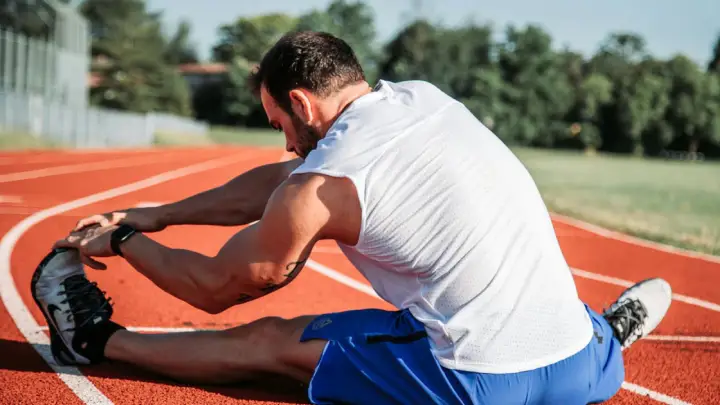
Final Thoughts
Although leg day can be difficult, it can be effectively managed with a good warm-up. You will be prepared to squat deeper, lunge more smoothly, and lift more weight if you dedicate 10 to 15 minutes to cardio, dynamic stretching, mobility drills, activation work, and progressive loading.
The aftermath is just as crucial; recovery and growth are guaranteed by foam rolling, static stretching, and healthy eating. Leg day may seem difficult, but with planning, self-control, and strategic training, it can be a workout that improves not only your legs but also your general strength, balance, and athletic ability.
Therefore, keep in mind that preparation is often the difference between mediocre and outstanding results the next time you’re tempted to skip or rush through your warm-up.
Frequently Asked Questions
How much time should be spent warming up for a leg day?
Ten to fifteen minutes is how long a proper leg day warm-up should last. This allows your body enough time to activate your main muscles, relax tense joints, increase your heart rate, and get ready for heavy lifting without using up all of your energy.
How should I prepare for and recover from leg day?
Incorporate dynamic stretches, mobility drills, activation work, light cardio, and progressive warm-up sets before leg day. After that, concentrate on foam rolling, static stretching, staying hydrated, and eating a healthy diet. Muscle recovery is accelerated, and soreness is lessened by cooling down.
Can I lift my legs without warming up first?
You run the risk of injury, poor form, and decreased squat depth if you skip the leg day warm-up. It helps to prepare the muscles and joints gradually, even for a strong lifter. Warming up for a few minutes is like insurance for your long-term progress.
Which stretches work best after a leg day?
Static stretches are ideal after a leg day. Pay attention to your hip flexors, calves, glutes, hamstrings, and quadriceps. Pigeon pose, seated hamstring holds, and calf stretches are all great options. Additionally, foam rolling helps reduce stress and enhance recuperation.

